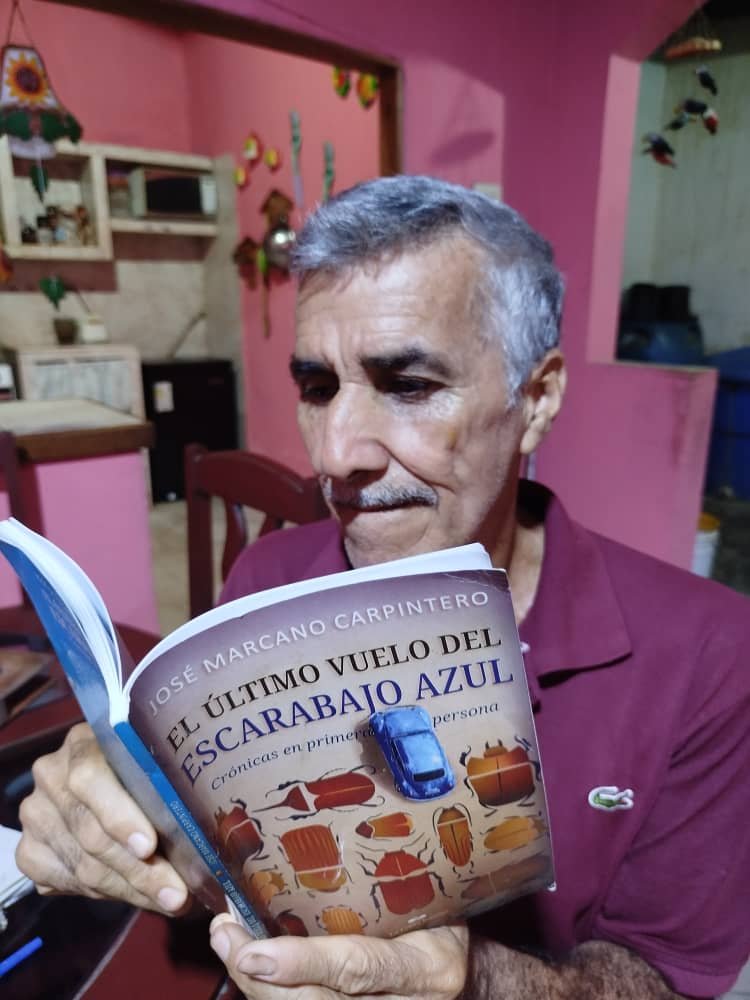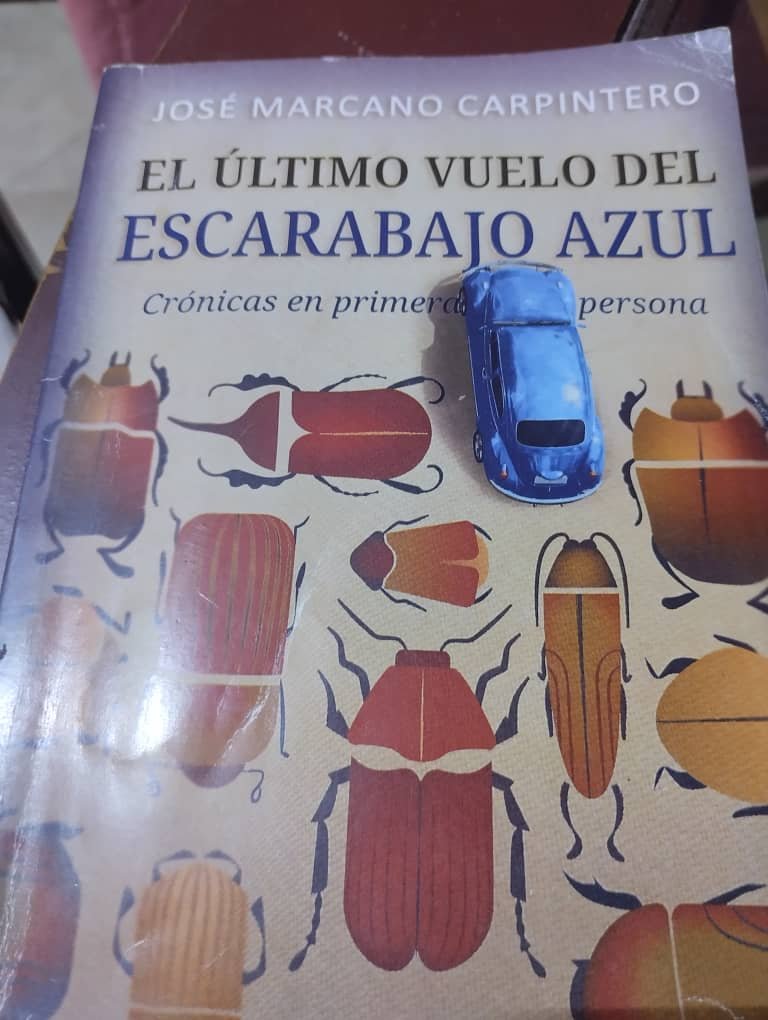Today I am going to share my impressions about the book of chronicles "The last flight of the blue beetle" by José Marcano Carpintero, which is narrated in first person and was published in the year 2024. The author presents a series of chronicles referring mainly to the daily life of himself and other protagonists, specifically, events that occurred in the XXI century and some others in the XX century. These events are placed as
I will make an outline of some chronicles, the first one is titled the same as the work "The last flight of the blue beetle", here he relates the farewell of his car, a Volkswagen with which he lived pleasant moments, he emphasizes what this car represented for him and his family and how difficult it was to get rid of it. And everything is circumscribed to what he lived in the state of Sucre and the feeling he felt for the car, he was reluctant to sell it, however, he sold it due to acquired commitments.

Another of the chronicles is "The burial of memory" where he tells the story of a cousin who had been orphaned since she was a newborn, due to the death of her father and without the support of her biological mother. Here the importance of memories and being absorbed in oneself is highlighted. An interesting story that makes us reflect on life and old age.
On the other hand, in "When you have a child" he invites us to learn about his daughter Adriana and her pilgrimage to the neighboring country of Colombia. In times of conflict on the border with the aforementioned country. And explaining all the anguish for the departure and stay, thinking about all the risks involved. In addition, he briefly explains about the critical situation in Venezuela for the year two thousand nineteen.
In the following chronicles he continues to show the human character behind the daily life in Venezuela, according to him, a country marked by difficulties, but especially in the city of Cumaná, Sucre state. Everything related, the author explains, are real facts. He also refers to a very sad fact, such as the cruel pandemic, and some unpleasant moments lived with COVID 19.

The economic crisis of Venezuela in the years two thousand fourteen to two thousand twenty is also taken into account in these chronicles. Fundamentally, it is worth highlighting the personal qualities of the author.
Another outstanding chronicle is "There are no elves but flowers", here he describes some anecdotes lived with the painter Genaro Coa, a native of Marigüitar, capital of the Bolívar municipality.
Many of the chronicles mentioned here were published in the seminar El Clarín, the newspapers of Sucre and Región as well as some local magazines.
Versión en EspañolHoy voy a compartir mis impresiones sobre el libro de crónicas "El último vuelo del escarabajo azúl" de José Marcano Carpintero, el cual está narrado en primera persona y fue publicado en el año 2024. El autor plantea una serie de crónicas referidas más que todo a la vida diaria de él y otros protagonistas, específicamente, eventos ocurridos en pleno siglo XXI y algunos que otras del siglo XX. Estos hechos colocan como
Realizaré un esbozo de algunas crónicas, la primera se titula igual que la obra "El último vuelo del escarabajo azul", aquí relata la despedida de su carro, un Volkswagen con quien vivió momentos gratos momentos, hace hincapié en lo que representaba este auto para él y su familia y lo difícil que fue desprenderse. Y todo se circunscribe a lo vivido en el estado Sucre y al sentimiento que sentía por el automóvil, se resistía a venderlo, sin embargo, lo vendió por compromisos adquiridos.

Otra de las crónicas es "El entierro de la memoria" donde da cuenta de la historia de una prima que había quedado huérfana desde recién nacida, por la muerte de su padre y sin apoyo de su madre biológica. Acá se resalta la importancia de los recuerdos y estar absortos en sí mismos. Una historia interesante que nos hace reflexionar sobre la vida y la senectud.
Por su parte, en "Cuando se tiene un hijo" nos invita a conocer sobre su hija Adriana y su peregrinación hacia el país vecino de Colombia. En tiempos conflictivos en la frontera con el país mencionado. Y explicando toda la angustia por la partida y la estadía, pensando todos los riesgos que implicaba. Además, explica brevemente sobre la situación crítica de Venezuela para el año dos mil diecinueve.
En las siguientes crónicas sigue mostrando el carácter humano detrás de la cotidianidad en Venezuela, según expresa él, un país marcado por las dificultades, pero sobretodo en la ciudad de Cumaná, estado Sucre. Todo lo relatado, nos va explicando el autor, son hechos reales. Asimismo refiere un hecho muy triste, como la cruel pandemia, y algunas desagradables momentos vividos con el COVID 19.

La crisis económica de Venezuela en los años dos mil catorce a dos mil veinte también es tomada en cuenta en estas crónicas. Fundamentalmente es meritorio resaltar las cualidades personales del autor.
Otra crónica resaltante es "No hay duendes sino flores", acá describe algunas anécdotas vividas con el pintor Genaro Coa, oriundo dr Marigüitar, capital del municipio Bolívar.
Muchos de las crónicas aquí mencionadas fueron publicadas en el seminario El Clarín, los diarios de Sucre y Región así como algunas revistas locales.
✓Photos from my personal gallery, edited with Fotocollage.
✓Text translated with DeepL.
✓Fotos de mi galería personal, editadas con Fotocollage.
✓Texto traducido con DeepL.

